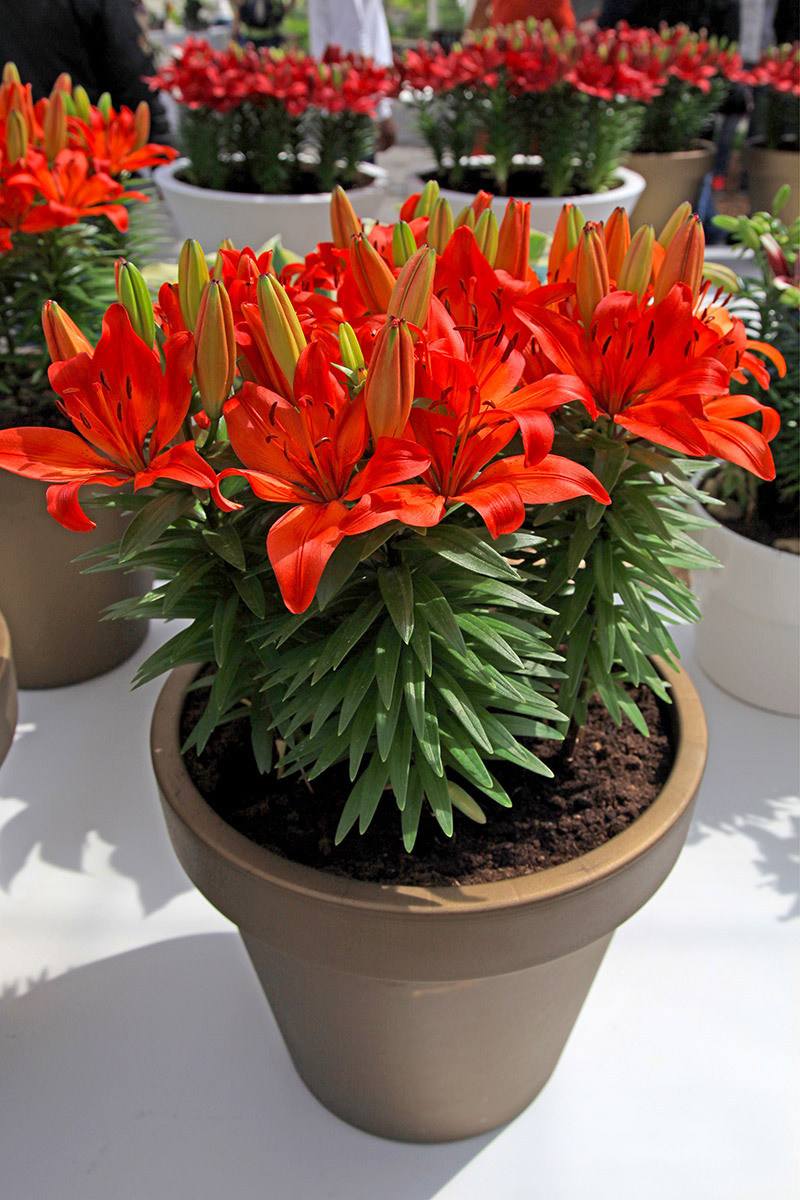Mastering the Basics of Orchid Maintenance
Posted on 04/07/2025
Orchids are stunning, elegant, and surprisingly hardy plants that grace windowsills and greenhouses worldwide. Yet, many people mistakenly believe these exotic blooms are difficult to care for. In reality, understanding orchid maintenance comes down to a few essential principles. With the right knowledge, you can keep your orchids thriving for years, consistently rewarding you with breathtaking blooms.
Understanding Your Orchid: Types and Basic Needs
The first step to mastering orchid basics is identifying which type you have. There are over 25,000 documented species and countless hybrids, but most household orchids fall into a few common categories:
- Phalaenopsis (Moth Orchid): The most popular and beginner-friendly, known for its long-lasting flowers and resilience.
- Cattleya: Celebrated for their vibrant colors and fragrance, requiring more light than Phalaenopsis.
- Dendrobium: With a wide range of shapes and sizes, these thrive with a marked dry period after blooming.
- Oncidium: Often called "dancing lady" orchids, require ample humidity and slightly more frequent watering.
Each variety has unique needs, but they all share certain requirements. Whether you grow orchids indoors or outdoors, understanding their basic demands lays the foundation for successful orchid maintenance.
Orchid Light Requirements
Lighting plays a crucial role in the growth and blooming of orchids. Most commonly grown orchids require bright but indirect light. Direct sunlight may cause leaf burn, while insufficient light results in poor blooming.
- Phalaenopsis: Prefers filtered light or an east-facing window.
- Cattleya and Dendrobium: Thrive with brighter, slightly direct morning sun.
Always monitor the color of the leaves: healthy leaves are medium green, not dark green or yellowish.
Optimal Watering Techniques for Orchids
Improper watering is the most common cause of orchid trouble. Overwatering can suffocate roots, while underwatering leads to dehydration. For most orchids, the "soak and dry" method works best:
- Water thoroughly, allowing excess to drain out the bottom.
- Let the potting mix dry slightly before the next watering.
- Never let orchids sit in water, as this invites root rot.
Important: The frequency changes depending on the season and indoor climate. Check the roots and medium by touch--if slightly dry, it's time to water.
Choosing the Right Potting Material
Unlike ordinary houseplants, orchids grow best in bark-based mediums or sphagnum moss, providing excellent aeration to their roots. Avoid traditional soil, as it clogs orchid roots and causes rot.
- Bark mix: Ideal for most orchids, mimics natural habitat.
- Sphagnum moss: Retains moisture, suitable for seedlings or dry environments.
- Charcoal or perlite: Added for drainage and to prevent acidity.

Essential Orchid Maintenance Practices
Mastering basic care goes beyond just watering and lighting. Here's a breakdown of daily, weekly, and monthly routines to keep your orchids healthy:
1. Humidity and Air Circulation
Orchids thrive in higher humidity environments, typically between 40-70%. In dry homes, use a humidity tray or a room humidifier. Good air movement is crucial to prevent fungal issues and promote healthy growth--use a small fan on low if necessary, but always avoid cold drafts.
2. Feeding Your Orchid
Fertilize orchids "weakly, weekly"--dilute orchid fertilizer to one-quarter strength and apply during active growth (usually every 1-2 weeks). Reduce feeding during dormant periods. Avoid over-fertilization, which can burn roots and inhibit blooms.
3. Regular Repotting
Orchids should be repotted every 1-2 years or when the potting medium breaks down. Repot after blooming, not during. Repotting:
- Prevents root rot and compaction
- Refreshes the nutrient supply
- Encourages new root growth
Remove old medium gently, trim any dead roots, and choose a slightly larger pot only if necessary.
4. Pruning and Cleaning
After an orchid blooms, prune the flowering stalk just above a node or at the base, depending on the species. Remove any dead leaves or roots regularly with sterilized scissors. Cleanliness helps prevent disease and pests.
Common Problems and Solutions in Orchid Care
Even with the best care, orchids can face occasional issues. Here's how to address the most frequent problems:
- Yellow leaves: Often a sign of overwatering or excessive sunlight. Adjust care accordingly.
- Drooping leaves: Usually results from underwatering or root loss. Check root health and moisture levels.
- No blooms: Insufficient light or overfeeding the plant with nitrogen-heavy fertilizer. Provide optimal light and switch to a bloom-boosting fertilizer.
- Pest infestations (mealybugs, scale): Use insecticidal soap and isolate the plant. Clear pests manually with a cotton swab dipped in alcohol.
- Root rot: Remove affected roots, repot in fresh, well-draining medium, and improve watering practices.
Preventive Orchid Maintenance for Long-Term Health
Prevention is easier than cure. By maintaining clean tools, pots, and growing areas, you'll protect your orchids from most pests and diseases. Monitor plants weekly for early warning signs. Remove fallen leaves and debris promptly, and avoid overcrowding pots for maximum airflow.
Seasonal Orchid Maintenance Tips
Orchid care needs shift with the seasons, especially when grown indoors. Adjust your practices as follows:
- Spring/Summer: Orchids enter a period of active growth. Provide increased fertilizer, maintain higher humidity, and position for more indirect light. Watering frequency may rise due to faster evaporation.
- Autumn: Reduce feeding as growth slows. Continue monitoring light levels as days shorten.
- Winter: Many orchids rest or reduce growth. Cut back on watering and fertilizer. Ensure sufficient light--supplement with grow lights if natural light is insufficient. Keep orchids away from cold, drafty windows.
Ensuring Consistent Flowering
One of the joys of orchid maintenance is seeing your plant bloom year after year. However, mastering re-blooming takes a bit of finesse. Here's how to boost your chances:
- Light: Keep within species-specific requirements. Many orchids need a seasonal drop in temperature or increased light to trigger blooms.
- Temperature: Many types, like the Phalaenopsis, benefit from a cool drop at night (5-10?F lower than day) in the autumn to set flower spikes.
- Water with balance: Don't flood or neglect--the roots should oscillate between moist and slightly dry.
- Rest periods: Some orchids require a dormant break after blooming. Limit water and fertilizer for a few weeks before resuming regular care.
Pro Tip for Orchid Beginners
Keep a plant journal! Record watering dates, fertilizer applications, blooms, and any issues to help you spot patterns and improve your orchid maintenance techniques over time.
Frequently Asked Questions about Orchid Care
How often should I water my orchid?
Most orchids need watering every 5-12 days, depending on variety, climate, and potting mix. Check the dryness of the potting medium with your finger or a wooden skewer before watering.
What's the best temperature for orchids?
Most orchids thrive between 65?F and 80?F (18?C to 27?C) during the day, with a 10?F drop at night. Extreme fluctuations can stress the plant.
Do orchids need special fertilizer?
Use a balanced orchid fertilizer at quarter strength, such as 20-20-20 or 30-10-10. During bloom time, switch to a formula higher in phosphorus to encourage flowers.
Why are my orchid's leaves wrinkled or limp?
This often means a watering issue--either too much or too little. Inspect roots: healthy roots are plump and green-white; brown, mushy roots signal overwatering.

Orchid Maintenance: Myths and Misconceptions
- Myth: Orchids are fragile and only suited for experts.
Fact: With the basics of orchid maintenance, even beginners can enjoy beautiful blooms. - Myth: Always water your orchid with ice cubes.
Fact: This can shock roots and is not ideal. Use room-temperature water for best results. - Myth: Orchids must be repotted every year.
Fact: Only repot once the medium degrades, or roots outgrow their container.
Final Thoughts: Elevate Your Orchid Maintenance Skills
Mastering the basics of orchid maintenance is a rewarding journey. With a solid grasp of light, water, humidity, feeding, and repotting, you can easily dispel the myth that orchids are finicky or high-maintenance. Each orchid species offers its own rhythm and beauty, but the care fundamentals remain the same. Stay consistent, observe your plant's responses, and don't be afraid to make adjustments.
Remember: Successful orchid growing comes from patience, learning from mistakes, and enjoying every victory--no matter how small. As your skills grow, so will your collection and confidence. Happy growing!
Latest Posts
Discover easy hacks to preserve your floral arrangements
The Ultimate Guide to Cut Flower Maintenance
The Romance of Red Roses on Valentine's Day





